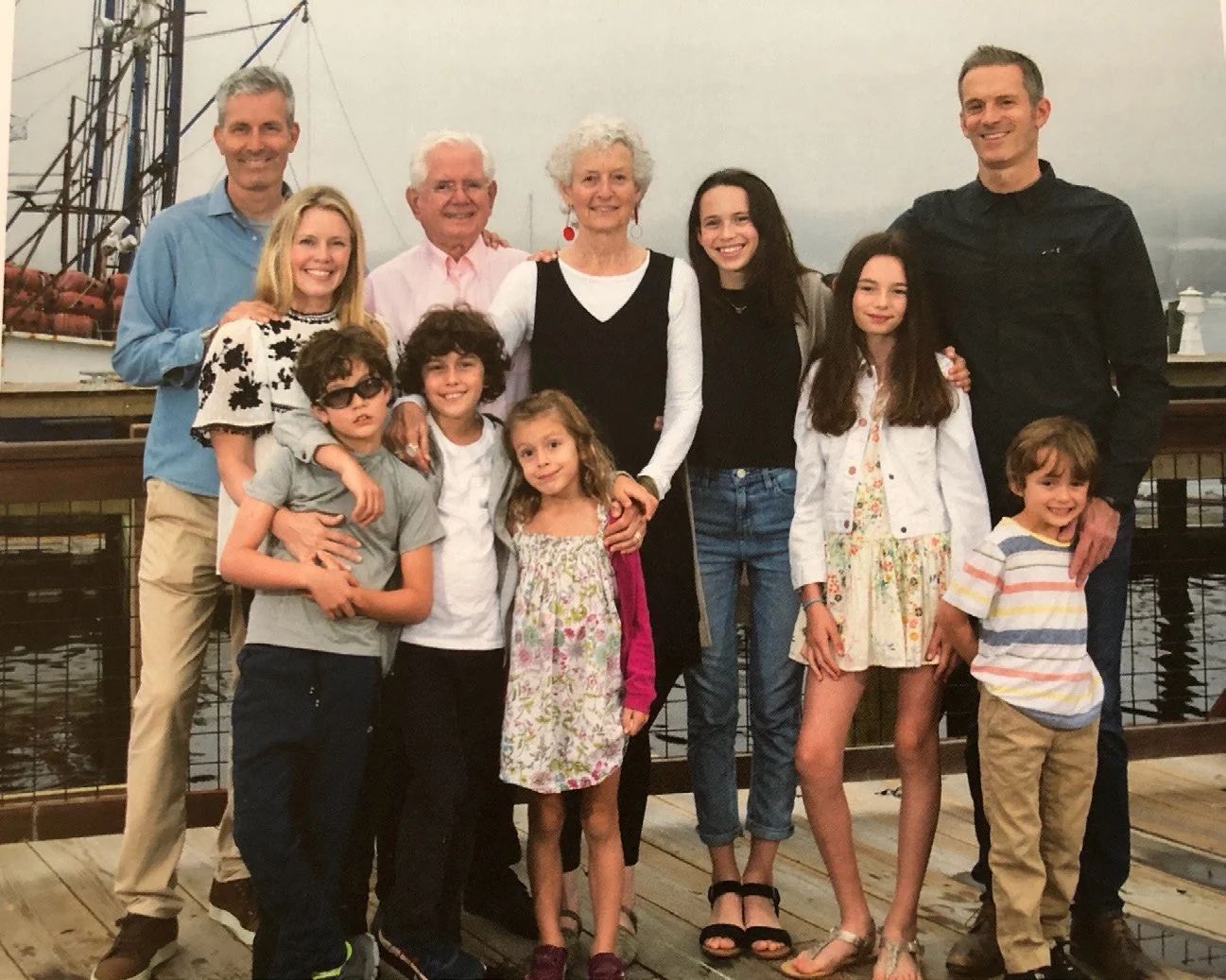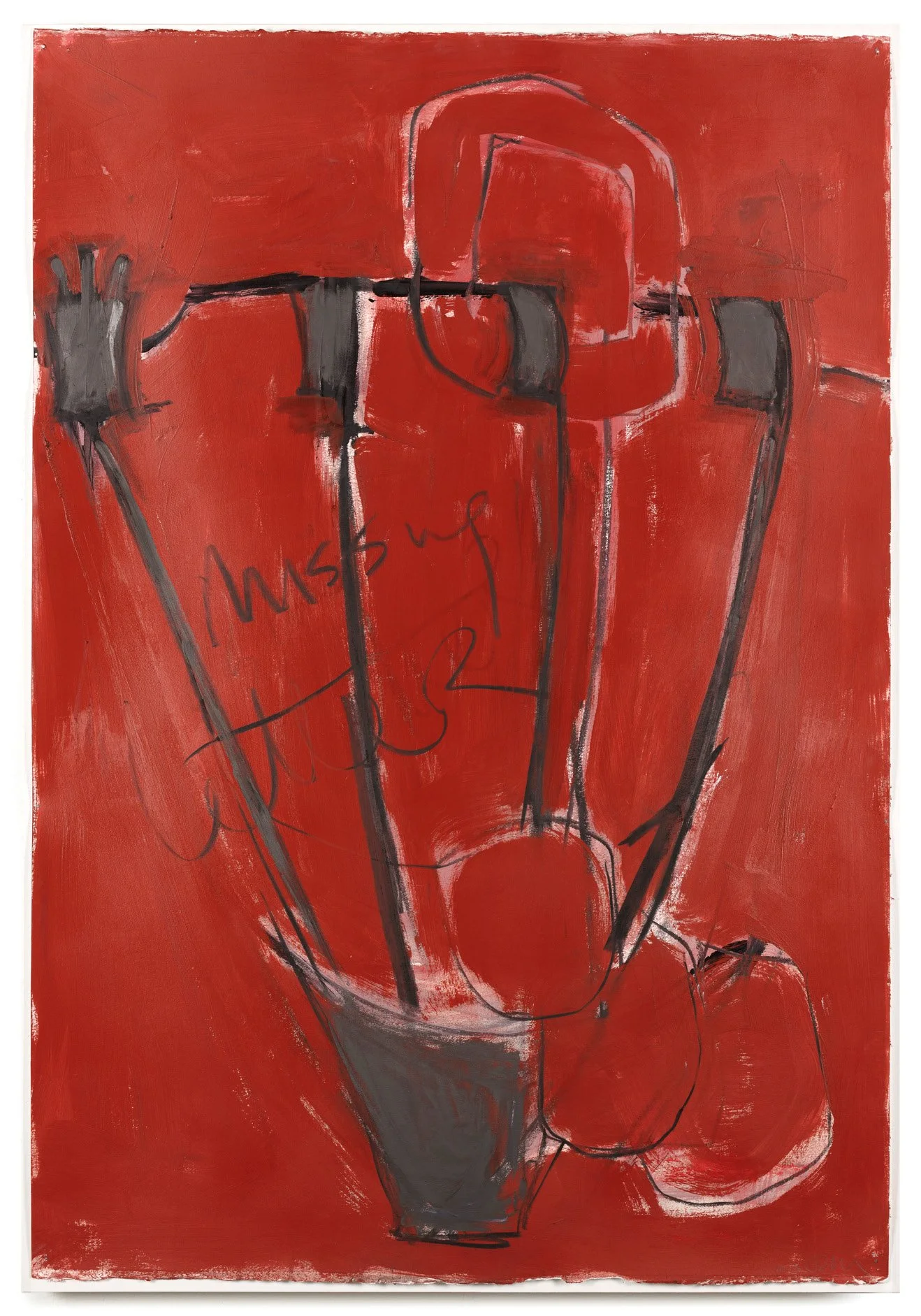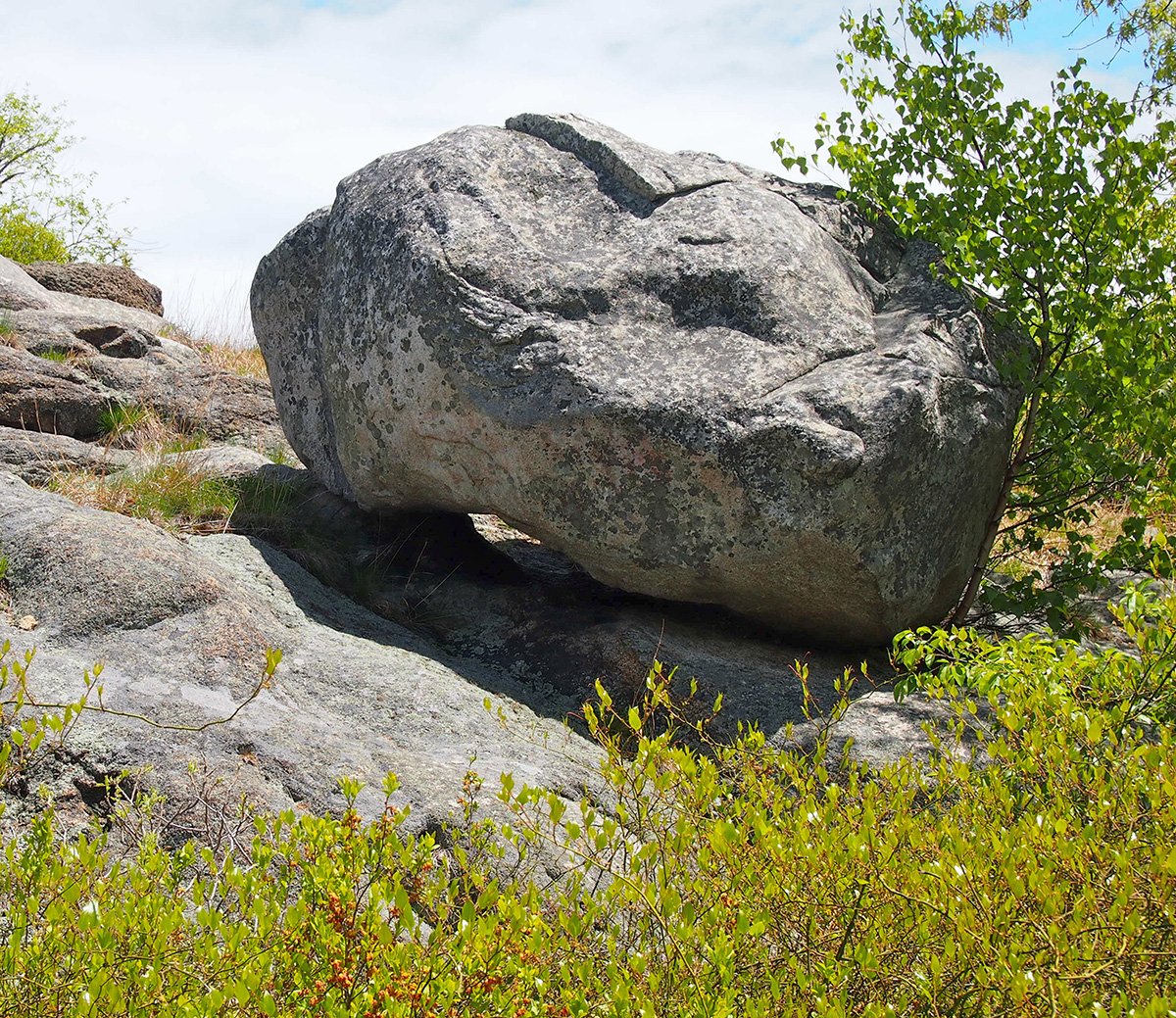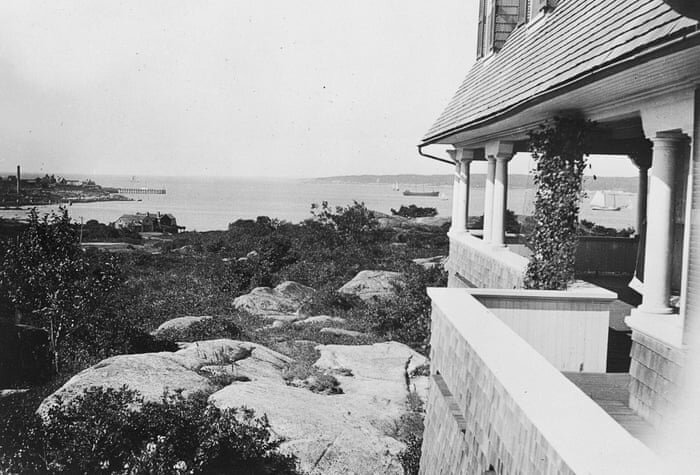On Rocky Neck
With Artist Ruth Mordecai
By Susanne Flynn
July 5, 2023
Ruth painting at a salt marsh on the way to Wingaersheek Beach, 2005.
I met with artist Ruth Mordecai on December 13, 2022, at her home and studio on Rocky Neck. This oceanside community located in Gloucester, MA, is one of the oldest continuously operating art colonies in the United States. For 150 years well-known artists, sculptors, and writers have lived and worked on Rocky Neck including Fitz Henry Lane, Leonard Craske (sculptor of the Man at the Wheel), Milton Avery, and Rudyard Kipling.
It was my first time meeting her. As our conversation unfolded, she often introduced a subject with the words, “What is most important…” or a similar expression. The more we talked, the more I understood that she aims to uncover the essence of what we’re discussing, and this is also reflected in her approach to creating art.
Ruth started her career as a sculptor. She believed she could create anything once she had learned how to work from the complex human figure. Ruth says she then had to unlearn her training to be free to do whatever she wanted. “You have to unlearn to hear your own voice,” she said.
“My story is that I thought I would always be a sculptor,” continued Ruth. “The study of the figure had engaged and challenged me. I wanted the discipline and also to carry on a long figurative tradition. Once I understood how the body worked and established my own visual language to interpret it, and as a lover of dance, I started to simplify the gestures and the parts.”
Ruth lived in Boston before coming to Gloucester in 1998. Ruth and her husband Ed Powers, a psychotherapist, shared a love of Gloucester, which she calls an amazing place. “Ed and I never experienced a real community until we moved here,” said Ruth.
Sadly, Ed passed away on March 24, 2022. They were married for 21 years and together for 24. Ruth showed me a photo of them kissing at their wedding. She has channeled the image into a series of paintings as a way of grieving and healing. The work starts with a fairly realistic rendering and becomes more and more abstract and simplified.
Family gathering on the dock at Maritime Gloucester, 2019.
Ruth with her husband Ed Powers, 2019.
Ruth’s Rocky Neck residence has her studio upstairs. Since her husband died, more of the studio has moved into the whole house. Most of the walls are white, showcasing her art and the art of her friends, colleagues, and mentors. The neighborhood and views are lovely, with a historical feel that is uniquely the Neck.
What Inspires Her?
“Over time, after an artist leaves the academic training behind, the work comes from the heart, and an artist develops a personal visual language.”
As we talked, it became evident that symbols, such as the sun, apples, and arches, are significant to Ruth. This led to her sharing something she wrote:
On the search for symbols at the ruins of an ancient synagogue at Bar’Am in Israel, 1993.
“I must have been unconsciously looking for guidance as I embarked on the 9th decade of my life. I was searching for a way to navigate this new space and time. In a dream appeared a sculptural form with many parts. This experience ultimately translated into a body of work named ‘The Sign.’ As the idea evolved in the studio, it began to include some of the symbols I have used at different times during a lifetime of art making. This language of symbols has always grounded me. All the symbols in ‘The Sign’ series are sourced from my travels, from stories, the Torah, or the writings of Rabbi Lawrence Kushner; included are the Missing Letter. (a symbolic reference to the possible arrival of the Messiah, who brings peace and love), an Ancient Sun (from a 10th century BCE clay cult stand at the Israel Museum), a ladder (from Jacob’s dream in the Torah), a goddess, and a tree of life. They all, to my mind, create an altar, a ‘Sign,’ a positive way to move forward. They speak to the importance of stories in our lives. Ultimately, I think of this work as a journey from the complex to the simple and from confusion to transformation.”
Symbols and stories, especially those that are part of Judaism, such as the mystical Missing Letter, have influenced Ruth’s work and taken her in new directions. Ruth is particularly drawn to symbols of peace and love.
The Missing Letter references a Jewish tradition of a non-existent mystical letter. “It is said that when the missing letter does appear, it will create undreamed-of worlds transforming repression into love,” Ruth said.
While she didn’t have the experience of growing up as a member of a temple, the use of symbols and visual language is her way of moving into the sacred and the history she is creating.
Her Process
“The integration of the primal with culture is both the goal and the source of my work.”
Ruth works on paper coated with white gesso; the gesso protects the paper. She draws whatever she is thinking about in charcoal, then uses black and white acrylic and moves them around to design a space. For example, Ruth can take away a black line with a white line. Then she adds oil paint, collage, and other materials. Because she works with paper, she is not limited by scale. She can cut it down or add more paper. Ruth loves the flexibility.
“I think my strength is that I come to painting from sculpture.” Since she stopped making sculptures about 20 years ago, painting and collage are what excites her. A lot of her new work has a collage element to it. According to Ruth, it seems to be the most two-dimensional direct connection to sculpture.
Her challenge is to simplify her art. She has a little handwritten sign saying “simplify” in her studio. “It feels wonderful to get something to its essence.”
Missing Letter #3, 60” x 40”, 2017.
Another source of inspiration and fulfillment is the Goetemann Artist Residency, which Ruth has helped direct and support with the help of a committee and other directors, specifically, Kathy Archer, Barbara Moody and Robin Colodzin. The residency program was founded in 2005 by Gloucester painter and teacher Gordon Goetemann and “fosters innovation and courageous artistic experimentation, cultural tolerance, and the exchange of new ideas.”
“This program invites nationally and internationally known artists to come to Gloucester to share their finished work and to explain their process,” said Ruth. “It’s a terrific teaching program and has supported and inspired hundreds of artists.”
What’s Ahead?
Ruth has exhibitions planned for the coming summer and fall. She is presently co-leader with Kat Masella of an ongoing Artists Conversation/Crit Group. “What is important is what comes out of our sharing, our dialogue/conversations,” she said.
Represented by the Matthew Swift Gallery since 2012, Ruth’s work can be found in major collections including the Boston Museum of Fine Arts, The Israel Museum, and the Rose Art Museum at Brandeis University. The Cape Ann Museum purchased two of Ruth’s significant works with Kanter Kallman Funds. She has taught at the Boston University School for the Arts, Harvard University Ceramics Program, and the DeCordova Museum School.
Puritan Capital of Hollis, New Hampshire, printed her book titled Ruth Mordecai. She gave me a copy, and I am entranced with the beauty and power of Dance Series with Yellow; Lovers, the White Painting #4; and Celia and Sun and Apples, and more. She wrote the book primarily to tell her story to her children and grandchildren and for collectors of her work.
Ruth does not create art to sell it and, at the same time, certainly wants it to sell. She has gifted work to her family. “If someone loves my work and wants to buy it,” said Ruth, “that is the best part - when someone finds meaning and connects to my art.”
Ruth Mordecai: New Work opens at Matthew Swift Gallery on October 28, 2023 and will remain on view through November 27.
Author’s Afterword
You will be in awe if you get to see Ruth’s work. And if you are as fortunate as I am, you will get to meet her and have a conversation. I hope you’ll talk about what is most important. To learn more about Ruth, order her book, or view some of her work, visit: ruthmordecai.com. To learn more about the Rocky Neck Art Colony, visit: rockyneckartcolony.org.
Susanne Flynn began her first career as a horticultural therapist and family therapist. Later, as she started raising a family she began a career in journalism. Susanne worked for various newspapers and penned her own weekly column, “Women for a Change.” The column spotlighted local working women including stay-at-home moms. In1986, Susanne founded her company Strategic Development Consulting where she designed and implemented learning and communication programs. Currently, Susanne is retired and loving life in Gloucester. She volunteers for Generous Gardeners and Backyard Growers. She is delighted and grateful to help write stories for the Gloucester400+ Stories Project!






















